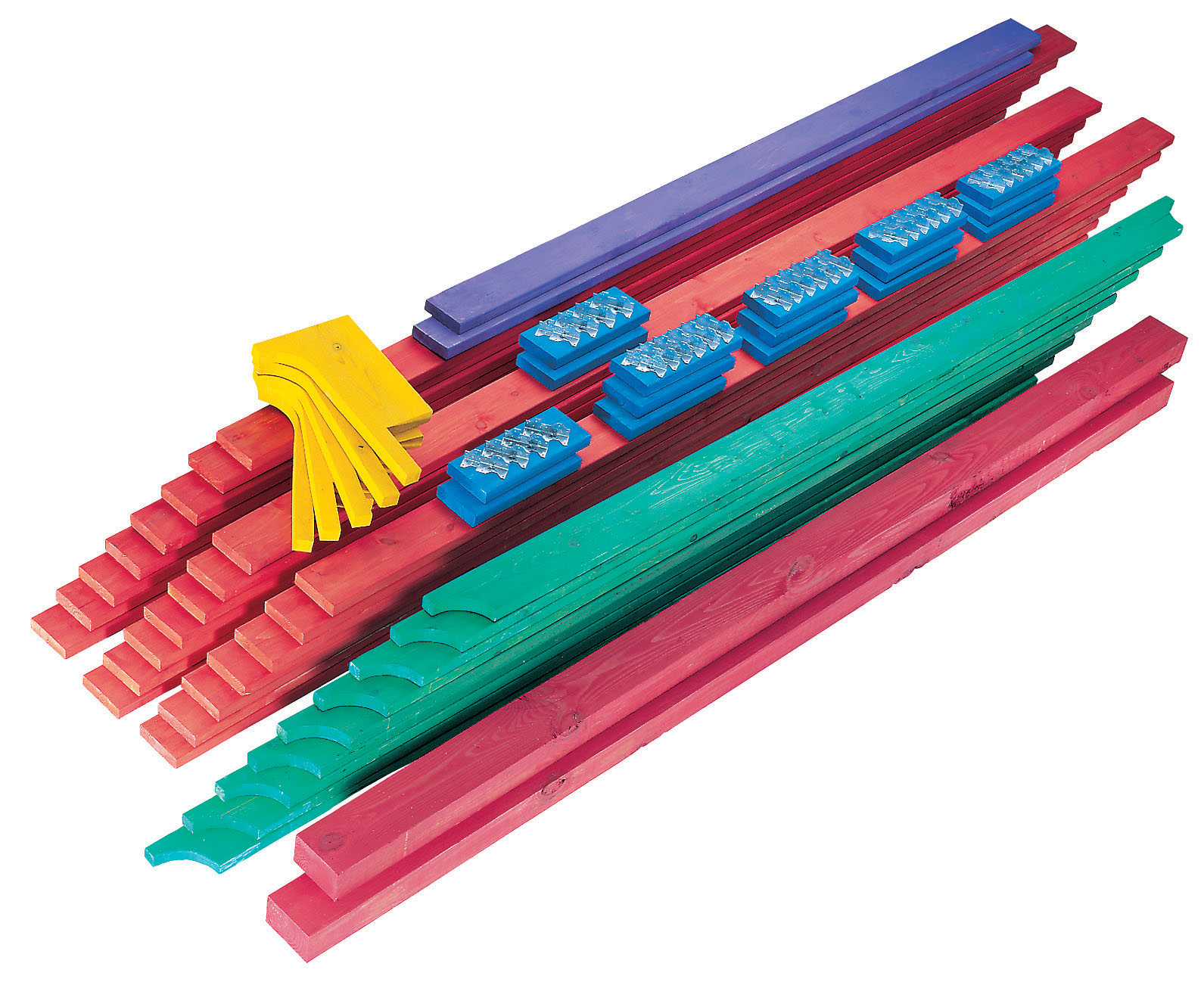
Here’s ALL the lumber you’ll need, color-coded to our plans and photos.

Here’s ALL the lumber you’ll need, color-coded to our plans and photos.
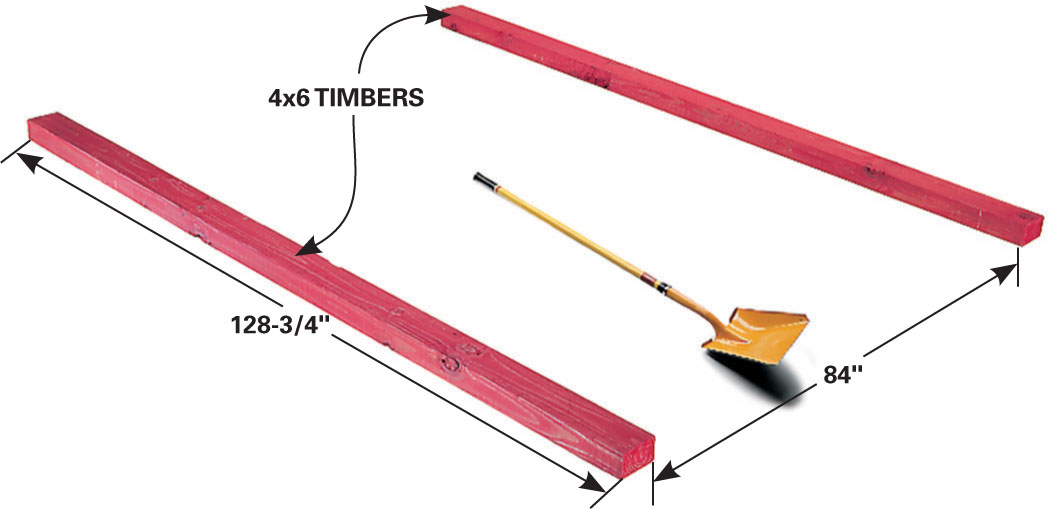
1
Dig the 4x6 timbers into the soil, leaving about 1-1/2 in. of the top exposed. The timbers must be parallel and level and the diagonal measurements must be equal.
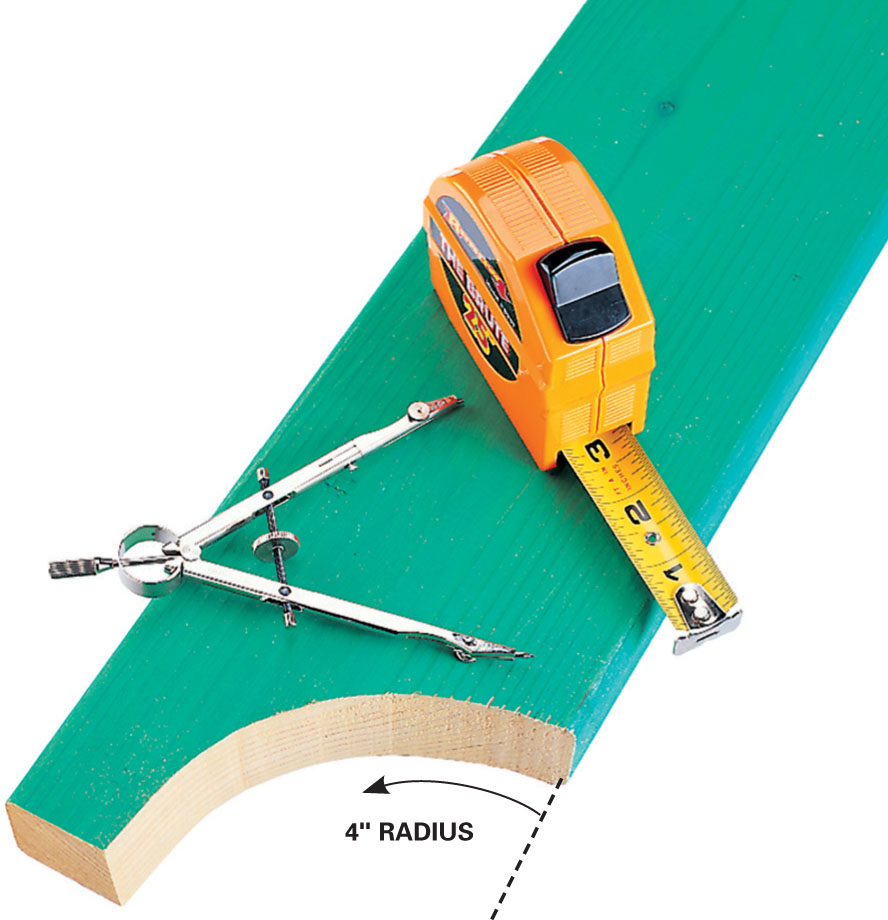
2
Cut each treated 2x6 joist to 10 ft. Cut the decorative curve on each end, as shown, before installing them onto the 4x6 treated timbers.
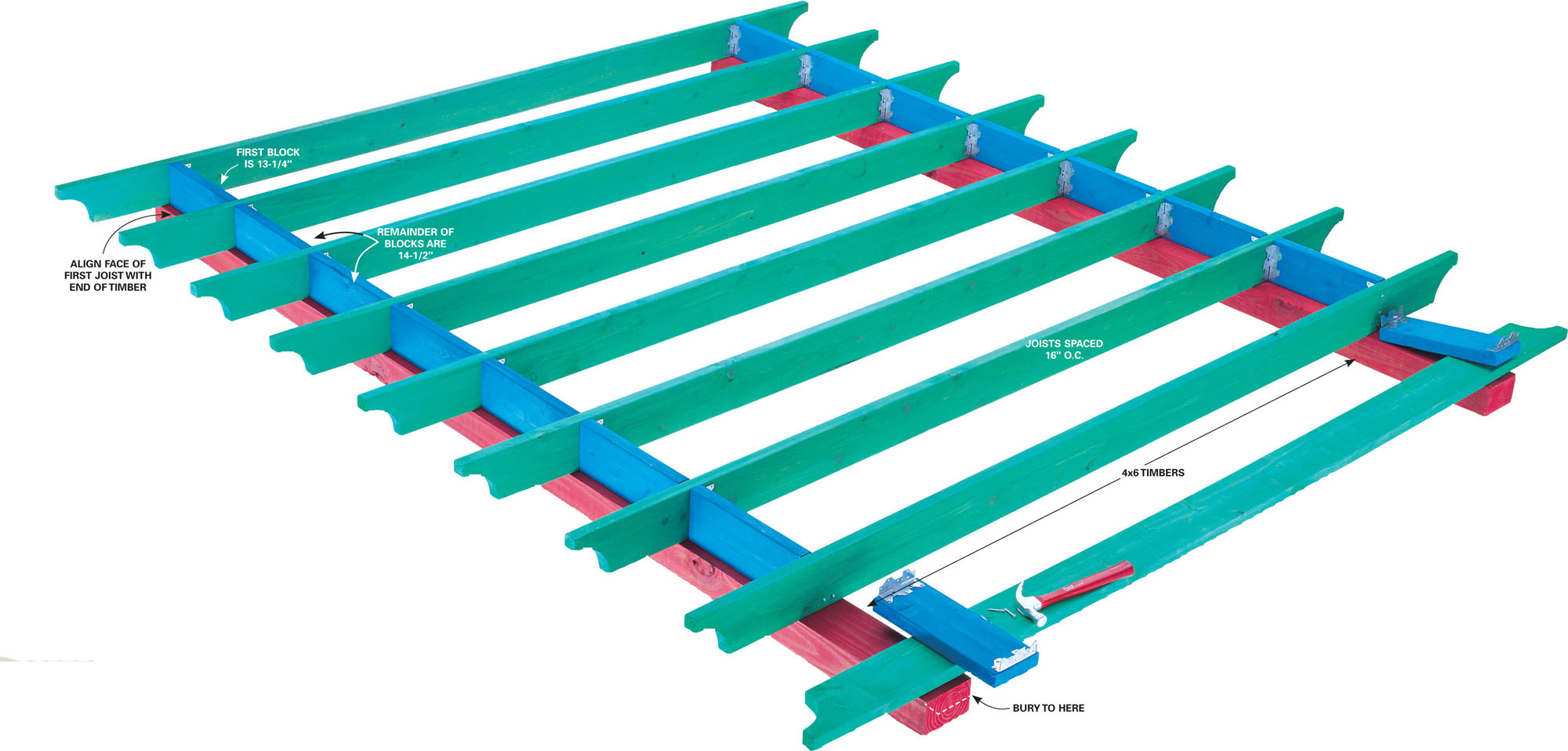

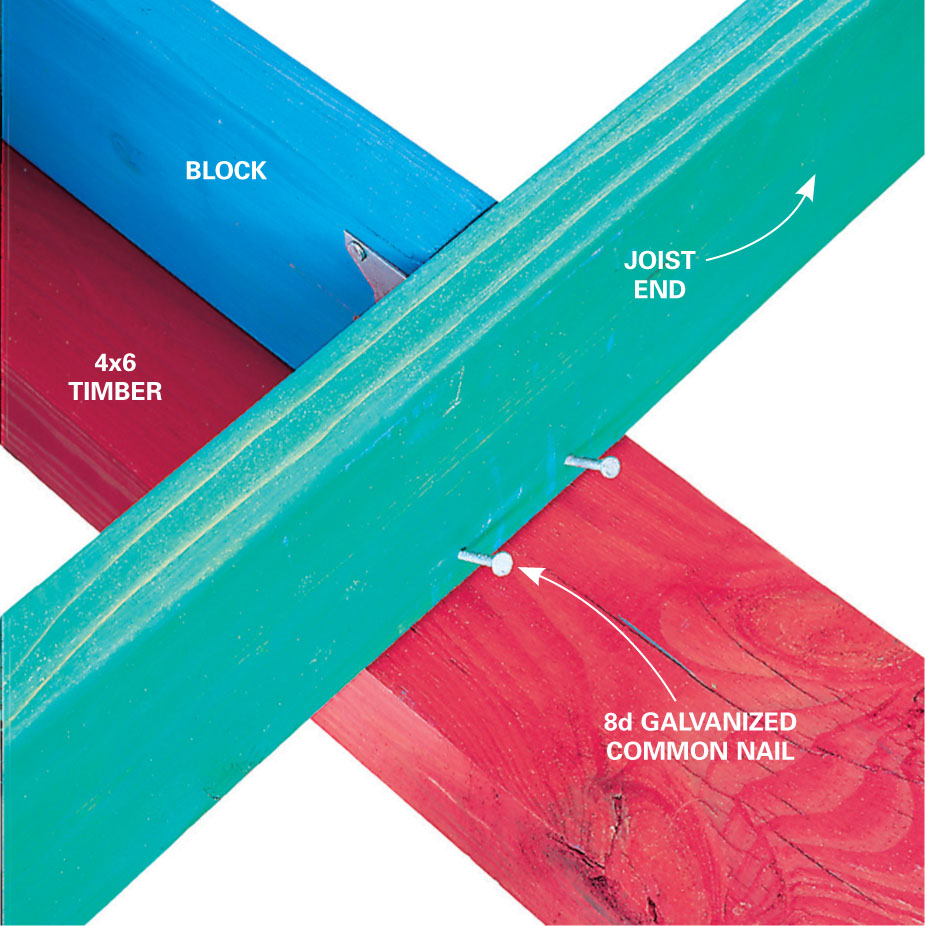
3
Lay out the joist spacing so the joists are on 16-in. centers. Cut the blocks to fit between the joists. The first set of blocks (one on each side) will be 13-1/4 in., while the remainder will be 14-1/2 in. long. Toenail each joist to the timber as shown. Be sure the ends of all the joists align with each other as you toenail them in place.
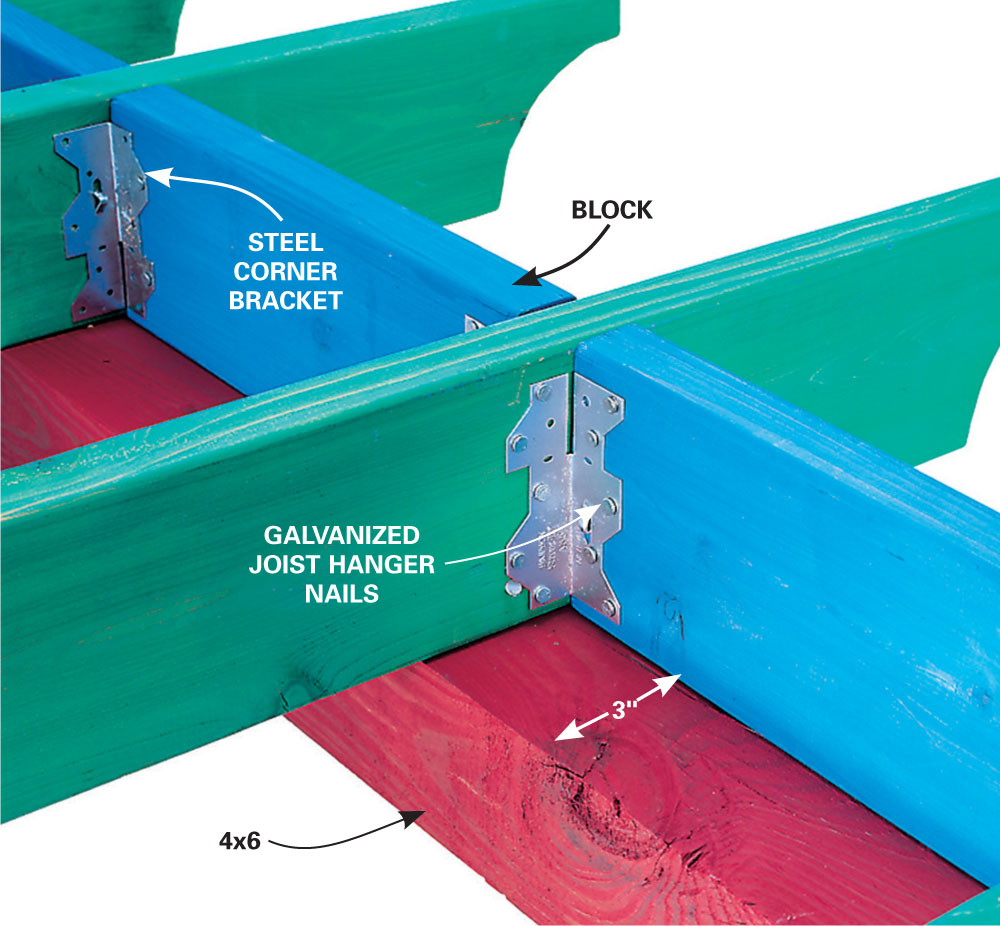
4
Nail your steel corner brackets to the joists and each block between with 1-1/4-in. galvanized joist hanger nails. The blocks add stability and give the deck a finished look.
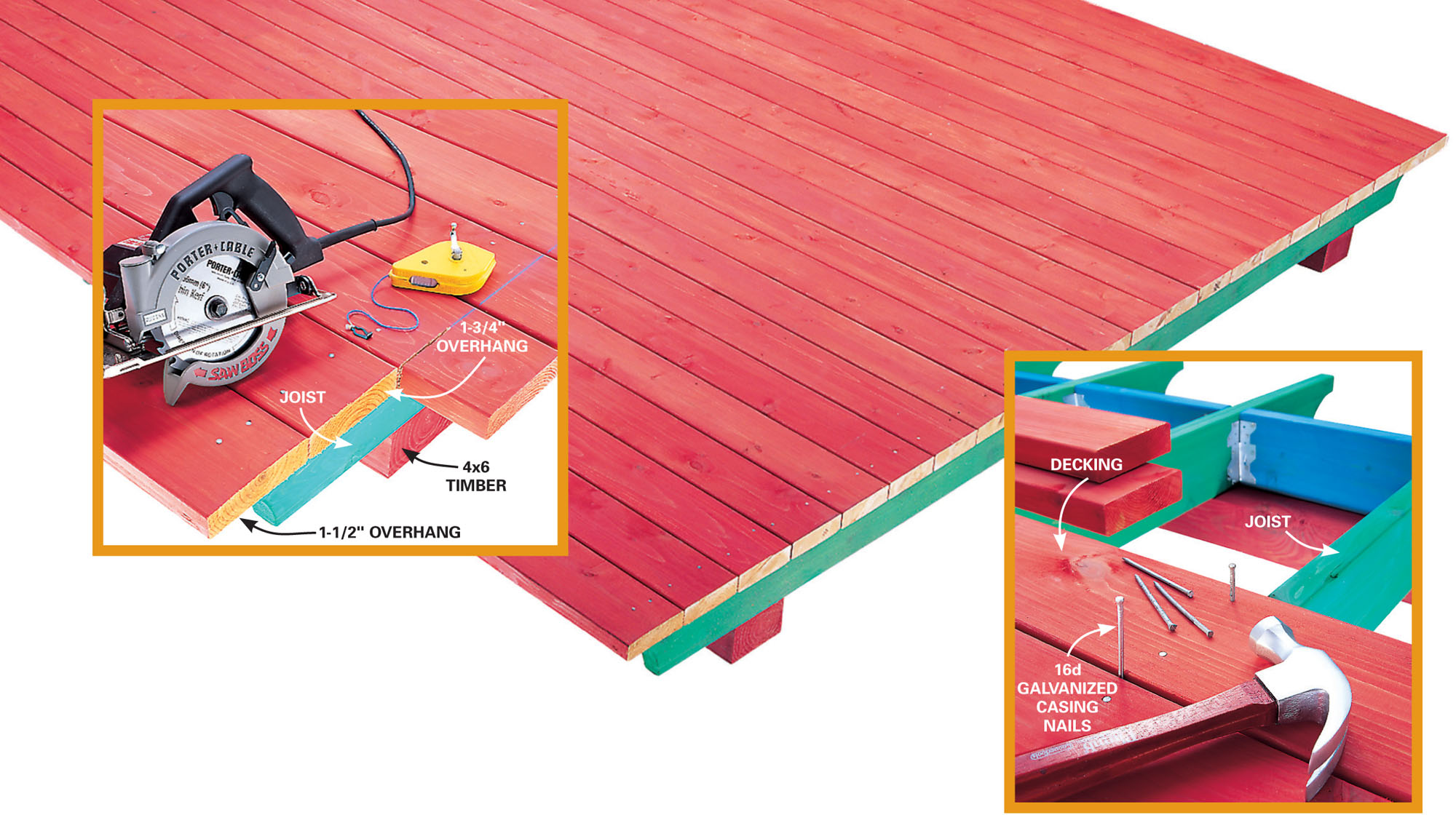
5
Start nailing the 2x6 decking from one side, leaving a 1-1/2-in. overhang. Keep the decking straight and use a 16d galvanized nail as a spacer. Depending on the spacing, you may need to rip the last piece of decking to maintain the 1-1/2-in. overhang. Once the decking is nailed, crosscut the lengths, leaving a 1-1/2-in. overhang. Be sure to use a chalk line to establish a straight guideline before cutting.
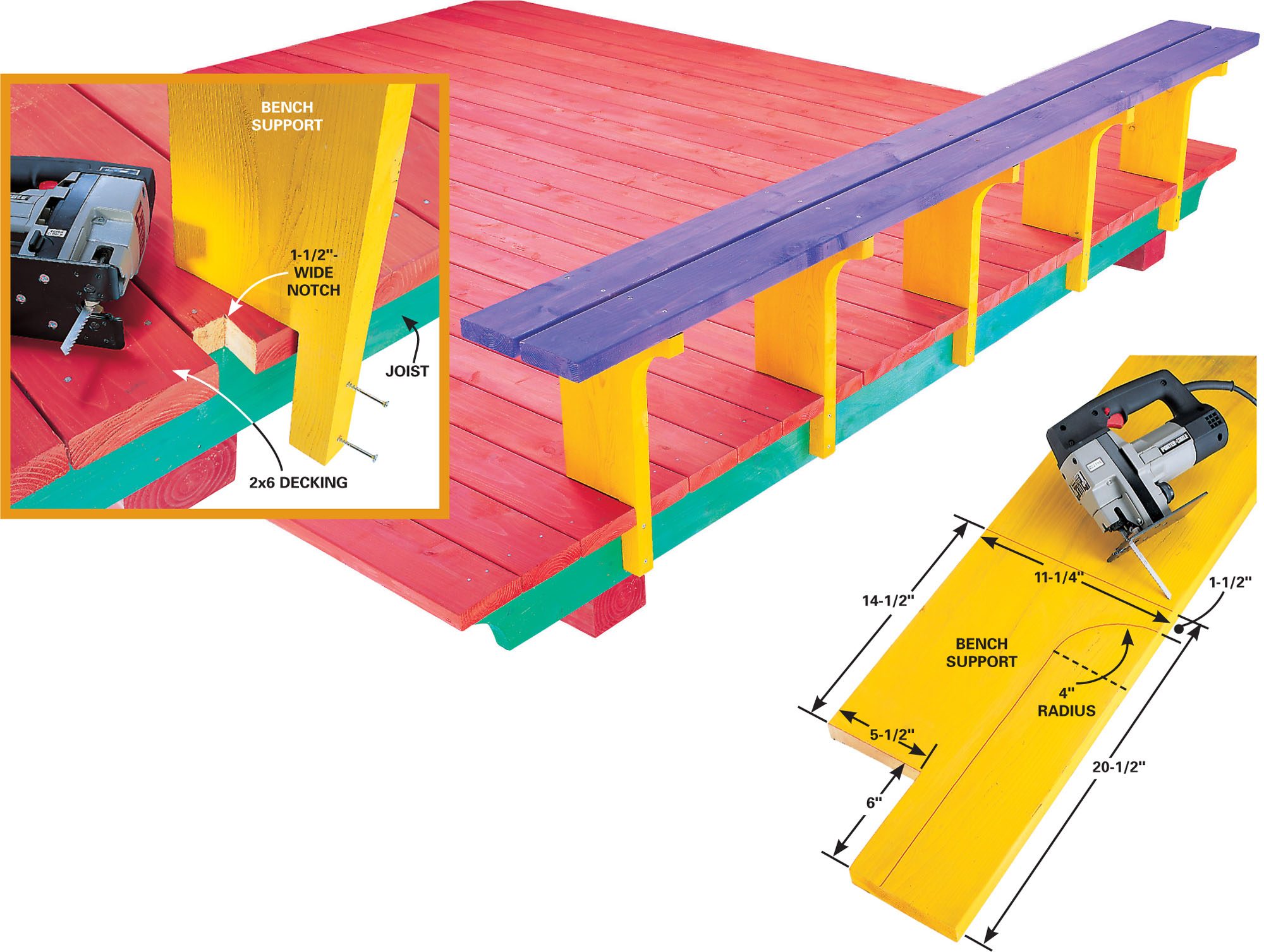
6
Cut the bench supports from 2x12 lumber. Notch the decking to accept the bench supports. Be sure to toenail the back side of the seat support to the decking for added stability. Be sure the supports are square to the deck surface, then screw the 2x6 bench tops to the supports with 3-in. galvanized screws.